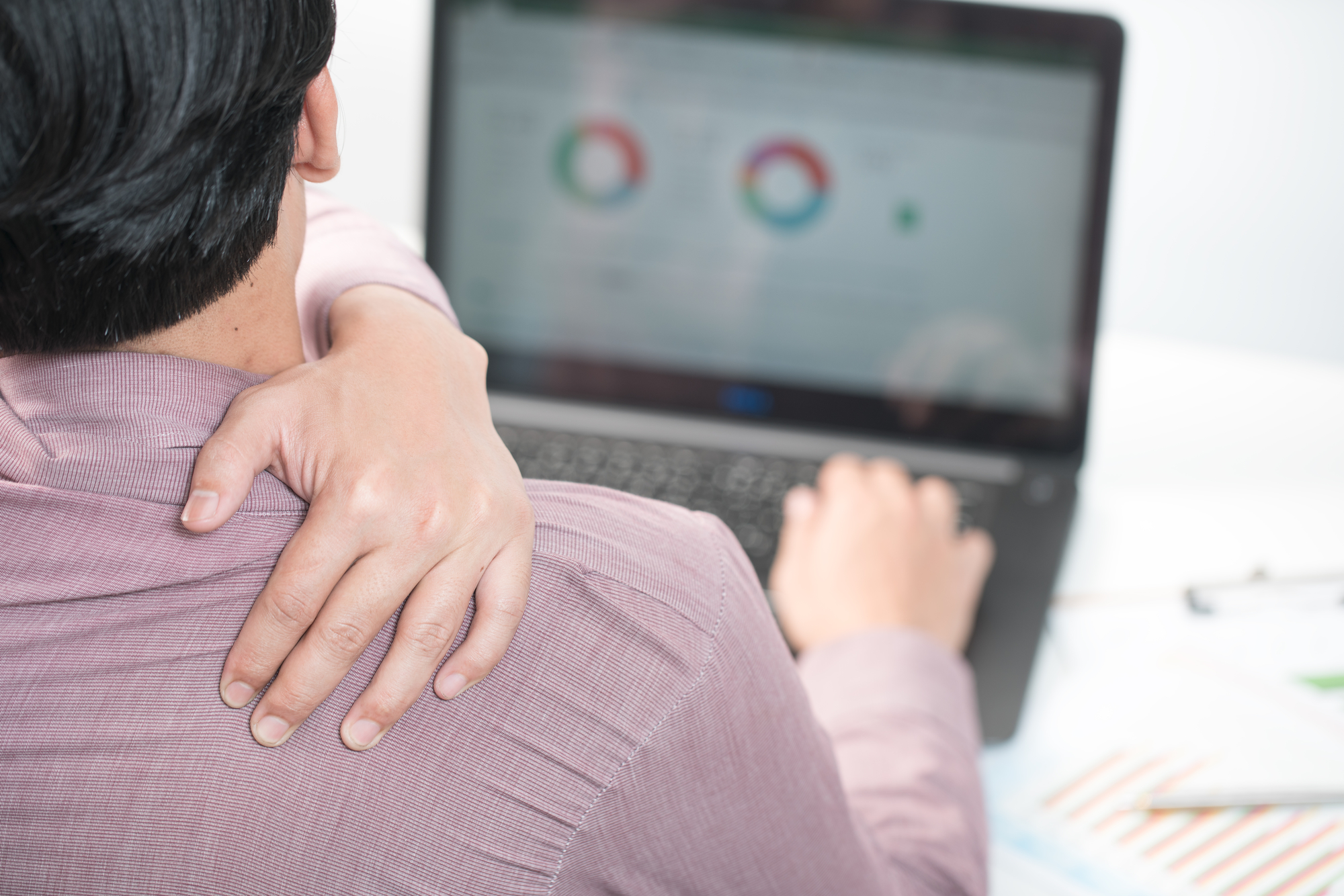Abnormal scapular (shoulder blade) motion most often occurs when compensating for another injury or pain in the shoulder area. Individuals may compensate for pain in the ball and socket joint by trying to get more motion through the scapulothoracic joint (the joint between the shoulder blade and the chest wall), which results in overuse injury to the muscles that stabilize that joint. Scapular instability can cause pain in the back of the shoulder, upper back, or even pain in the neck area that comes from the scapular stabilizing muscles, including the trapezius muscle, among others.
The most common visible sign of fatigue or imbalance of the scapular stabilizing muscles is called winging, where the shoulder blade looks like it pops out when raising the arms overhead. This typically occurs because of weakness in the muscles surrounding the shoulder blade, although it can also occur due to a nerve deficit.
Physical therapy is the most common treatment for pain or winging due to scapular instability, as it helps strengthen the specific muscles that stabilize the scapula. Many shoulder surgery post-operative physical therapy plans include exercises for scapular stabilization, since many patients will use the scapulothoracic joint more in order to compensate for pain and limited motion following surgery. Physical therapy to strengthen the surrounding muscles is important to address this secondary problem, which often occurs after surgery. The link below demonstrates some of the exercises that may be helpful.
When recovering from surgery or healing from a fracture, scapular instability can be a frustrating hurdle to overcome in the healing process. It can also be confusing for patients, as the pain may occur in a different location than where the issue actually occurs, as in patients who experience neck pain or upper back pain.
When an underlying issue, such as arthritis, contributes to scapular instability, it’s important to see a specialist who can treat the primary problem and reduce the need for compensation when rotating the shoulder. A combination of treating the primary problem and working with a physical therapist to strengthen the surrounding muscles can help reduce pain and improve overall shoulder function.
If you experience pain in the back of the shoulder or uncomfortable popping of the shoulder blade, contact the Oklahoma Shoulder Center for an appointment.
By Oklahoma Shoulder Center PLLC
November 15, 2017

Blog Posts

